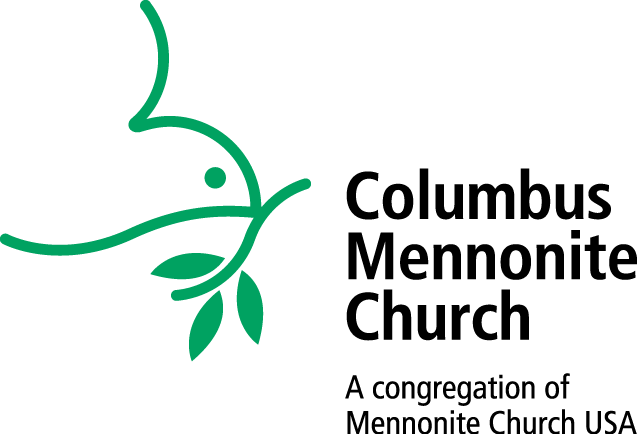Dangerous Inspiration | 25 October 2015
Text: Revelation 21:9-27
Speaker: John Kampen
Revelation is a book of the bible that is not a natural reference point for those of us who consider ourselves liberal or progressive Christians. We normally don’t know what to do with the strange visions, the bizarre imagery, for us Mennonites the violent imagery. This is bizarre and confusing material that challenges the rational mind. We want to be able to say that this is not the basis for my belief, my theology, my ethic. We want to move as far away from it as possible. This is what both the Christian Church and the emerging rabbinic movement did in the first few centuries of the Common Era. We can compile an extensive list of non-canonical Jewish and Christian apocalypses from that period. However, only two of those books are found in our canon, Daniel and Revelation. They considered this literature to be as elusive as we do, hence not very reliable for questions of doctrine and practice, perhaps even dangerous.
Now I know that all of your difficulties with this book have already been resolved through the careful thoughtful sermons of Pastor Joel. Consider me to be the apocrypha to his Torah, the hidden wisdom.
This chapter in Revelation begins with the more well-known lines, “Then I saw a new heaven and a new earth . . . .” (21:1-2). Here we have the conclusion to the strife and the conflict that pervades the remainder of the book, its culminating vision. When we read this chapter we are reminded of sections of Isaiah such as Chapter 6:1: “In the year that King Uzziah died, I saw the Lord sitting on a throne high and lofty, and the hem of his robe filled the temple. . . . And one (of the seraphs) called to another and…
Revelation III: The tree of life | 18 October 2015
Texts: Genesis 2:4b-9, Revelation 21:22-22:7
It’s been observed that the Bible begins in a garden and ends in a city. A garden, as in the Garden of Eden of Genesis, where the human creature is formed from the dust of the earth and receives the Divine breath of life. And so the story begins. And then at the end, a city, the New Jerusalem of Revelation, where humanity is restored and reconciled.
Some of us have had a similar garden-to-city trajectory in our own life, growing up in a rural area and now living here. Columbus is a lovely city, but I dare say we have a ways to go before we reach the New Jerusalem.
One of the key connections between the beginning and the end, is this mysterious tree of life. It shows up in the garden of Genesis, the garden that the humans lose access to after eating the fruit from that other tree. Then the tree of life goes missing, only to resurface in the final book of the Christian Bible, Revelation. And not just the final book, but the final chapter of the final book. In the New Jerusalem, which has a river running through it, like Columbus, and many other cities, John says: “On either side of the river is the tree of life with its twelve kinds of fruit, producing its fruit each month; and the leaves of the tree are for the healing of the nations.” I’m not sure how the tree of life can be on either side of the river – mark that up to one more mystery of Revelation – but the water serves as no barrier to this tree. It is perfectly accessible and continually fruitful. The tree is there for healing.
The tree of life serves as bookends to the…
Revelation II: The Lamb and the Beast | 11 October 2015
Texts: Revelation 5, 13
On Wednesday I walked home for lunch as I often do. I went to the back of our yard to open the gate on the coop for our four chickens to roam around the larger fenced in area. As I approached I noticed the loose soil and scattered feathers, a clear sign that a night invader had dug its way in and made a kill. This was not the first time this has happened, and as I buried the remains of the chicken I asked the same kinds of questions I’ve asked before. I wondered what kind of animal had done the killing. I wondered if there’s even more we need to do to protect the chickens, or if this is just an inevitable thing that will happen from time to time. I wondered if more protection for the chickens equated to a more prison-like existence for them. I wondered if humans had never domesticated animals if this chicken, in its more wild incarnation, would have been safely roosting overnight up in a tree somewhere in southcentral Asia. Or if it would have been fierce enough to at least ward off the predator, rather than the defenseless creature we’ve bred it to be. Mostly, I was again confronted, in a graphic way, with what happens when a predator does its thing at the expense of its prey.
I wasn’t planning on bringing the chickens into this week’s sermon, but this unfortunate backyard farming incident feels like an appropriate lead in to one of the dominant themes of Revelation – the contrast between the Lamb and the Beast.
When John writes his pastoral letter / apocalyptic vision to seven churches in his region, he uses imagery from the animal world to speak about human realities. For a modern day…
Revelation I: I heard. I looked. I saw. | 4 October 2015
Texts: Revelation 1:1-3,9-16; 4:1-8; 19:6-10
There’s a great irony at the beginning of Revelation. The first word of this book, the very first word, is the word we translate as “revelation.” To reveal, to disclose, make known. It begins, “The revelation of Jesus Christ, which God gave him to show his servants what must soon take place; he made it known by sending his angel to his servant John.” The irony is that what follows, this grand making known, this revelation, is one of the most confusing, confounding, convoluted, pieces of literature ever.
Or so it seems to us.
The very book that bears that name ‘revelation’ appears to us as anything but, and has proved most dangerous in the hands of those who believe they know exactly what it has revealed.
We need look no further than our own Anabaptist tradition to see what kind of religious fervor Revelation has inspired. In the 1530’s, still the early days of the Protestant Reformation, the city of Munster in Northwest Germany was taken over by radical Anabaptists seeking to establish “The New Jerusalem” referenced in Revelation 21. This initially included sharing their goods in common, like the early church, but led to tyrannical rule by several leaders and violent armed resistance against anyone who challenged them. The Munsterite Anabaptists were soon crushed and their tortured bodies publicly displayed in cages. The human remains are gone, but the cages still hang in the streets of Munster to this day. Some of you have seen them.
Claas Epp was another Revelation-inspired Anabaptist, producing one of the most bizarre and tragic episodes of Mennonite history. In 1870 when the Russian government no longer granted Mennonites special privileges, such as military exemption, many emigrated West to the US and Canada. But Claas Epp cited Revelation chapter 3, which includes…
The Psalm 1 tree or The Giving Tree? | 20 September 2015
Text: Psalm 1
The trees have been in the news recently. Earlier this month the Washington Post carried an article with the lengthy headline “Scientists discover that the world contains dramatically more trees than previously thought.” Before this study scientists had used satellite imaging to estimate that there are about 400 billion trees in the world. The revised number is 3.04 trillion. Climates like Ohio, home of temperate forests, have about 600 billion trees total, itself quite a bit more than the previous estimate for the whole planet. The new global estimate means there are about 422 trees per person.
For those wondering, a tree gets defined as a plant with woody stems larger than 10 cm in diameter, about four inches, at breast height. So the waist high service berry and Japanese maple we planted in our front yard two years ago do not yet count as trees. The new total is based on satellite imaging, plus on the ground measurements at 429,775 different locations around the world, so this was truly a colossal study. If you want to know more of the technicalities I’ll put a link to the original scholarly article from the journal Nature on the sermon page of the website, although be forewarned that the methodology section contains sentences like this: “To account for this collinearity, we performed ascendant hierarchical clustering using hclustvar function in R’s ClustOfVar package in each biome-level model.” p. 6
3 trillion is a lot of trees, but it’s the least amount of trees in the last 10,000 years, barely half of what it once was. We’re losing about 15 billion trees a year.
More locally, the Dispatch carried an article on Wednesday about the city’s “Branch Out Columbus” campaign. The goal is to raise the tree canopy of the city from…

